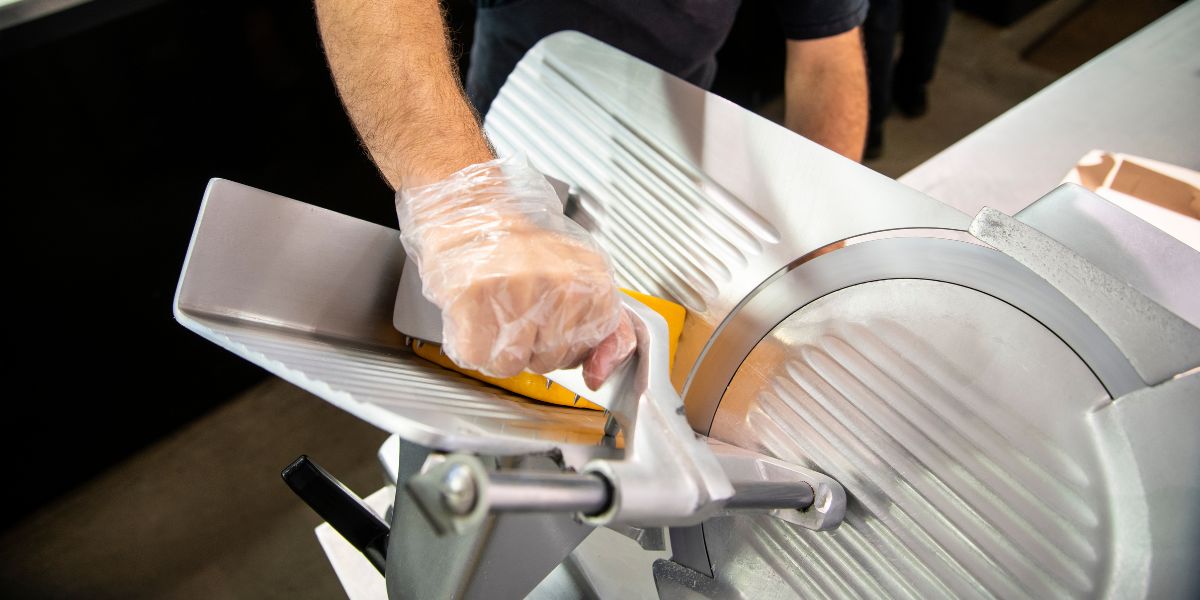Help Isom IGA recover from devasting floods

In the competitive grocery industry, reducing shrink is top-of-mind for many independent grocers. In fact, 69% of food retailers have plans to address overall shrink, according to FMI.
But is your plan doing enough? A store with deli shrink at 14% (using this example from Where's My Shrink), could be losing $74,000 a year in deli shrink alone. By implementing techniques outlined in this article, this same store could reduce deli shrink to 4% a year or less, resulting in a savings of $53,000 a year!
During a keynote speech at the International Supermarket Management Class in Atlanta this summer, Rick Findlay, VP of food service & international at Dairy Farmers of Wisconsin, shared tips for reducing deli shrink, including his WEPT approach: waste, execution, portions, and theft.
Findlay's former roles as VP of purchasing & marketing at Whole Foods and chief merchant for Fresh Thyme grocery store in Chicago developed his expertise on the topic. In fact, when he took over at Fresh Thyme, their deli shrink was at an alarming 16%. Findlay and his team promptly deployed the WEPT approach to determine the issues and significantly reduced their shrink.
While shrink is a combination of waste, inefficiency, and theft, this article will primarily address how to make your deli more efficient. Keep reading for details on the WEPT approach and best practices to combat deli shrink.
Waste: Identify the Root Causes
Waste accounts for approximately 60% of deli shrink, according to Technomics research. To effectively reduce shrink in the deli department, managers must measure and identify the root causes of waste, which will help prevent over-ordering and poor forecasting.
“Check your trash can first,” Brian Roberts, district manager at Carlie C’s IGA, said. “Have an exit plan for the items that you’ve over-produced. Then you can set a par level (optimal quantity) of what you need rather than what you think you’ll over-produce.”
When Massy Stores in Barbados produces 200 rotisserie chickens and only sells 160, they repurpose the remaining 40 by using them in salads the next day.
Findlay noted you can also repurpose those unused meats for soups, an extremely high margin category within deli.
“As soon as you open the case, think about what's the next step. What's the next iteration? That's that forward thinking that comes into play,” Findlay said.
During his time at Whole Foods, deli shrink was about 3-4%.
“That was because we had those exit strategies and were able to repurpose that product into salads, sandwiches, soups, chili, etc.” Findlay said, adding that there are technologies available to aid with forecasting.
Execution: Product Handling
Proper product handling is key to preserving the shelf life of perishable items, with execution errors causing 30% of shrink on average, according to Findlay.
Ensure products remain fresh and appealing to customers by training team members on product handling.
“We train and teach our employees to handle that product with tender loving care, as if it were a baby,” Findlay said. “When I see people drop cases of bananas, it just kills the product. Then you take off the shelf life and experience higher shrink.”
Deli teams must also prevent spoilage by storing products under 40°F or over 140°F, depending on the product's need.
“For every 30 minutes you leave a pallet of product on the dock in hot weather, you take a day's shelf life off that product,” Findlay emphasized.
And again, turn those lemons into lemonade with exit strategies for any products that can no longer be sold.
Portion: Precision & Efficiency
Optimize production efficiency while minimizing waste through consistent and precise portion control in your deli recipes.
Provide employees with the right tools, such as the correct measuring spoons or ladles, so they can follow recipes precisely.
If your deli prepares custom sandwiches for shoppers, upcharge for extras like added meat or cheese to ensure you can track what is sold and better manage inventory.
Theft: Address Internal & External Factors
Theft poses a considerable challenge for independent grocers, as it occurs both internally and externally. For example, the deli may use bread from the bakery, or employees may take products home from the store, both of which are considered internal theft.
In these cases, set departmental parameters and train employees on the need for them. How much bakery bread is allotted for deli use? Communicate your exit strategy on deli and prepared foods: can employees take extras home at the end of the day? These parameters will reduce both misunderstandings and internal shrink. In addition, employ strong internal controls and promote a culture of integrity among employees.
To combat external theft like shoplifting, develop effective security measures and monitoring systems. The IGA Coca-Cola Institute’s Loss Prevention I class details the various types of theft and factors that lead to shrink, as well as ways to prevent these actions. The Institute and Independent Grocers Alliance are working to develop a comprehensive strategy to address shrink throughout the store, including new and updated courses, webinars, and more. Look to The IGA Minute eNewsletter for release dates in the coming months.
By adopting a comprehensive approach to fight shrink like deploying the WEPT strategy and training associates on loss prevention, independent grocers can strive for excellence and ensure the success of their deli departments in a competitive market.
Previous Story
← IGA Coca-Cola Institute Expands Training On Natural Foods
Next Story
3 Summer Spending Trends →
You May Also Like
These Stories on Feature Story
Dec 9, 2025 4:16:05 PM |
6 min read
Nov 19, 2025 6:04:44 PM |
5 min read
Nov 12, 2025 10:09:52 AM |
2 min read



No Comments Yet
Let us know what you think